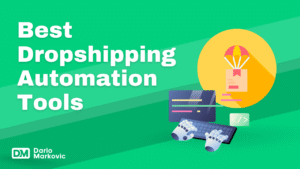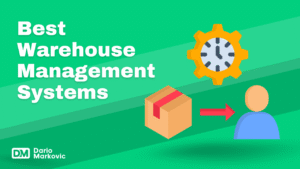Marketing b to c (B2C), or business-to-consumer marketing, involves direct selling of goods, products, or services to consumers.
In today’s digital landscape, its significance is amplified due to the rise of online shopping, with 18% of Americans prefer online shopping due to its 24/7 availability.
Mastering B2C strategies requires:
- A deep understanding of customer motivations
- Effective use of the marketing funnel
- Engaging content creation
- Leveraging various channels for maximum impact
Understanding Customer Motivations
To effectively target and engage consumers, developing accurate buyer personas is essential. These semi-fictional representations of your ideal customers are based on market research and real data about existing customers.
Key components of buyer personas include:
- Demographics: Age, gender, income level, education
- Psychographics: Interests, values, lifestyle choices
- Behavioral patterns: Purchasing habits and brand interactions
By crafting detailed buyer personas, businesses can align their marketing strategies with the specific needs and preferences of their target audience. This alignment fosters stronger customer relationships.
Identifying and tapping into customer motivations and aspirations plays a crucial role in creating compelling marketing messages. Understanding what drives your consumers allows brands to connect emotionally.
Consider the following aspects:
- Pain Points: Addressing problems or challenges faced by customers
- Aspirations: Highlighting how products or services can enhance their lives
- Values: Aligning marketing efforts with consumer beliefs and principles
Utilizing these insights helps in designing targeted campaigns that resonate more deeply with potential buyers, ultimately leading to higher engagement and conversions.
Navigating the Marketing Funnel in B2C Marketing
Understanding the marketing funnel stages is crucial in B2C marketing.
Each stage represents a different phase in the buying process, where consumers transition from awareness to consideration and finally to conversion.
Capturing consumer attention during the initial phase is vital for establishing brand recognition.
Awareness Stage: Capturing Consumer Attention
The awareness stage marks the beginning of the customer journey.
Unique strategies that effectively capture attention include:
- Eye-Catching Visuals: Compelling images or videos can grab attention more efficiently than text alone. Use bright colors, bold typography, and engaging animations to create visuals that resonate with potential customers.
- Intriguing Headlines: Craft headlines that provoke curiosity or highlight a problem your product or service solves. A well-written headline can entice users to click through, making it a critical element in your content marketing strategy.
Utilizing digital channels expands reach and increases visibility among potential customers:
- Social Media Platforms: Leveraging platforms such as Instagram, Facebook, and TikTok allows brands to connect with target audiences through organic content and paid advertisements. Consistent engagement through posts, stories, and ads can enhance brand recognition.
- Search Engine Advertising: Paid search ads enable businesses to appear at the top of search results when users look for relevant keywords. This digital marketing strategy targets users actively seeking information, products, or services similar to what you offer.
Incorporating these methods requires a strategic approach to ensure effectiveness:
- Identify Target Audiences: Use insights from buyer personas developed earlier to tailor campaigns that resonate with specific demographics.
- Create High-Quality Content: Invest effort into producing informative blog posts, videos, or infographics that provide value while promoting brand awareness.
- Utilize SEO Best Practices: Optimize content for search engines by incorporating relevant keywords naturally within titles and body text. Focus on both on-page and off-page SEO tactics to increase organic reach.
Through these digital marketing strategies, businesses can effectively capture consumer’s attention and initiate engagement at the awareness stage of the marketing funnel.
The significance of this stage lies in laying a solid foundation for nurturing customer relationships as consumers move toward consideration and conversion phases.
Understanding how to navigate this initial business to business phase equips marketers with essential tools for ongoing success in B2C marketing efforts.
Consideration Stage: Relationship Building Through Engaging Content
The consideration stage of the B2C marketing funnel is crucial for nurturing relationships with future customers. During this phase, consumers are evaluating their options and seeking information that influences their purchase decisions.
Creating valuable and relevant content can significantly impact this process.
Effective content marketing strategies include:
- Informative Blog Posts: These provide insights and solutions to common problems faced by consumers, establishing your brand as an authority.
- Interactive Quizzes: Engaging formats encourage participation and allow consumers to discover products tailored to their needs.
Differentiate B2B vs B2C marketing strategies approaches by understanding the emotional connections involved. B2C marketing focuses on long term relationship building through relatable content strategy that resonates with individual aspirations. This contrasts with B2B marketing, which often emphasizes logic and ROI.
Content should not only capture a consumer interest but also address their motivations and concerns throughout the buying process.
By leveraging engaging content in the consideration stage, businesses can effectively guide potential customers toward making informed purchasing decisions, setting the stage for conversion success.
Conversion Stage: Driving Sales and Encouraging Repeat Purchases
The conversion stage is crucial in the B2C marketing funnel, where future customers transition from consideration to making a purchase.
This stage focuses on techniques that effectively drive sales while encouraging repeat purchases.
Key Techniques for Conversion:
- Clear Calls-to-Action (CTAs): Utilize prominent, persuasive CTAs that guide consumers toward completing their buying process. Phrases like “Buy Now” or “Shop Today” can significantly enhance consumer’s attraction and quick solutions.
- Limited-Time Offers: Creating urgency through time-sensitive promotions can motivate consumers to make quicker decisions. Highlighting discounts or exclusive deals can lead to substantial increases in conversion rates.
Retargeting Campaigns:
Retargeting plays a vital role in this stage by re-engaging consumers who have shown interest but did not complete their purchase.
Strategies include:
- Displaying targeted ads across various platforms to remind users of products they viewed.
- Sending personalized emails featuring abandoned cart items, possibly with incentives like discounts to encourage completion of the sale.
Understanding the key differences B2B and B2C marketing funnels is essential. While business to business often involves longer decision-making processes and multiple stakeholders, B2C marketing focuses on emotional connections and quicker purchasing decisions.
Mastering these nuances enhances effectiveness in driving sales and cultivating customer loyalty.
Leveraging Personalization Strategies for Enhanced Customer Experience
In the world of B2C marketing, delivering personalized experiences is crucial for standing out in a competitive market. Consumers today expect tailored interactions that resonate with their individual needs and preferences.
Implementing effective personal relationships strategies can significantly enhance customer satisfaction and loyalty.
Key elements include:
- Understanding Customer Data: Gather insights through data analytics to understand consumer behavior, preferences, and purchase history. This information forms the foundation for creating personalized messages.
- Segmentation: Divide your audience into specific segments based on demographics, interests, or shopping behaviors. Utilizing the power of segmentation and personalization ensures that tailored content is directed towards these groups, maintaining relevance.
- Dynamic Content: Utilize tools that allow for dynamic content adjustment based on user behavior. For instance, emails can showcase products previously viewed or recommended items based on past purchases.
Implementing data-driven decisions ensures that communication across various channels—whether email, social media, or website—is consistently relevant and engaging.
Personalized marketing not only enhances the customer experience but also drives higher engagement rates and conversions, making it a cornerstone of effective B2C strategies.
Embracing an Omnichannel Approach to B2C Marketing Success
Creating a cohesive brand experience across both online and offline touchpoints is essential in B2C marketing. This approach ensures that consumers interact with your brand seamlessly, regardless of the channel they choose.
Key components of an effective omnichannel strategy include:
- Consistent Messaging: Maintaining uniformity in your branding and messaging across all platforms enhances recognition and builds trust.
- Integrated Customer Journeys: Allowing customers to switch between channels without disruption—such as browsing online and purchasing in-store—can significantly improve their experience.
Examples of successful omnichannel strategies:
- Click-and-Collect Services: Retailers like Target allow customers to order products online and pick them up at physical locations, combining the convenience of digital shopping with the immediacy of in-store acquisition.
- Social Media Integration: Brands that utilize social media not only for advertising but also for customer service can engage multiple stakeholders effectively, responding to inquiries and feedback across different platforms.
An omnichannel approach not only engages consumers more effectively but also fosters loyalty by ensuring that every interaction contributes to a seamless experience.
Building Trust Through Authenticity and Customer-Centric Practices
Cultivating trust with consumers hinges on authentic relationships and transparency. When brands are open about their values and practices, they foster a sense of reliability among their audience.
Here are key strategies to enhance trust:
1. Transparent Communication
Clearly articulate your brand values, mission, and ethical practices. This openness invites consumers to connect on a deeper level.
2. Active Listening
Engage with customers through social media, surveys, and feedback forms. Addressing their needs and concerns demonstrates that their opinions matter.
Handling negative reviews is an essential aspect of maintaining a positive reputation:
1. Respond Promptly
A timely response shows that you value customer feedback. Acknowledge the issue and express your willingness to resolve it.
2. Show Empathy
Use empathetic language while addressing complaints. Understanding their feelings can turn a negative experience into a positive one.
3. Public Resolution
When possible, handle issues publicly as this showcases your commitment to customer satisfaction. Future customers will see how you treat those who voice concerns.
By prioritizing authenticity and customer-centric practices, businesses can create lasting connections with consumers, ultimately enhancing brand loyalty and driving growth.
Implementing Effective Customer Retention Strategies for Long-Term Success
Retaining existing customers is crucial in the B2C marketing landscape. Focusing on customer retention not only reduces acquisition costs but also enhances customer lifetime value (CLV).
Here are key strategies to boost retention:
1. Loyalty Programs
Well-designed loyalty programs incentivize repeat purchases. Consider implementing tiered rewards systems that encourage customers to engage more with your brand. For example, offering points for each purchase can lead to discounts or exclusive access to new products.
2. Personalized Communication
Tailor messages based on customer preferences and behaviors. Use data-driven insights to create targeted campaigns that resonate with individual needs, enhancing the perceived value of your offerings.
3. Customer Feedback Loops
Actively seek feedback from customers and implement changes based on their suggestions. This shows consumers that their opinions matter, fostering a sense of belonging and loyalty.
4. Exclusive Offers
Provide special deals or early access to sales for returning customers. This creates urgency and appreciation, motivating them to choose your brand over competitors.
Investing in these strategies strengthens relationships with consumers, ensuring they remain loyal advocates for your brand in the competitive B2C environment.
My Conclusion
Adapting to changing consumer preferences is crucial for successful B2C marketing. Businesses must embrace the strategies discussed throughout this article.
Key Takeaways
- Understanding Customer Motivations: Develop accurate business buyers personas to effectively target and engage audiences.
- Navigating the Marketing Funnel: Utilize engaging content that builds relationships and drives conversions.
- Leveraging Personalization: Deliver tailored experiences across various channels.
- Embracing Omnichannel Approaches: Ensure a cohesive brand experience online and offline.
- Building Trust: Cultivate transparency and actively listen to customer feedback.
- Implementing Retention Strategies: Focus on enhancing customer lifetime value through loyalty programs.
Integrating these practices into an overarching strategy positions businesses to thrive in the competitive landscape of B2C marketing. Staying attuned to consumer needs will empower brands to foster lasting connections, driving long-term success in this dynamic environment.
FAQs about Marketing B to C (B2C)
What are the most effective B2C marketing channels?
The most successful B2C marketing channels typically include:
– Social media platforms (especially Instagram, TikTok, and Facebook)
– Email marketing campaigns
– Content marketing and blogs
– Influencer partnerships
– Paid social advertising
– Search engine marketing (SEM)
How do you measure B2C marketing success?
Key performance indicators (KPIs) for B2C marketing include:
Conversion rate
Customer acquisition cost (CAC)
Customer lifetime value (CLV)
Social media engagement rates
Email open and click-through rates
Return on ad spend (ROAS)
How important is social proof in B2C marketing?
Social proof is crucial in B2C marketing as consumers heavily rely on reviews, testimonials, and recommendations from other customers. About 93% of consumers read online reviews before making a purchase, making social proof a vital element of B2C marketing strategy.
How often should B2C companies post on social media?
The optimal posting frequency varies by platform:
Instagram: 1-2 times per day
Facebook: 1-2 times per day
X (Twitter): 3-5 times per day
LinkedIn: 1-2 times per week
However, consistency and content quality are more important than quantity.
What is B2C marketing?
B2C marketing (Business-to-Consumer marketing) refers to the strategies and tactics used by companies to promote and sell products or services directly to individual consumers. Unlike B2B marketing, B2C focuses on personal value, emotional connections, and immediate purchasing decisions.



